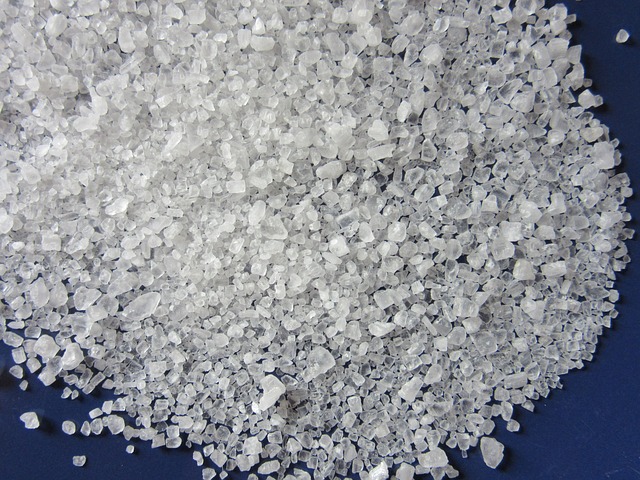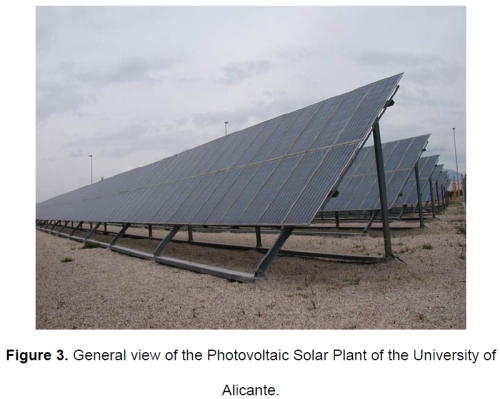Can we help you?
Contact us

Can we help you?
Contact us

Thank you for contacting us
Your form has been submitted successfully Our team will contact you again as soon as possible.
Whooppss...!! An error has occurred
Try sending later or write an email directly to areaempresas@ua.es

INFO
SHEET
DOWNLOAD
EXECUTIVE
ABSTRACT
CONTACT DETAILS: Research Results Transfer Office-OTRI
University of Alicante
Tel.: +34 96 590 99 59
Email: areaempresas@ua.es
http://innoua.ua.es
The Applied Electrochemical and Electrocatalysis Group (Institute of Electrochemistry) at the University of Alicante was created in 1983. From its creation, the aim of this research group has been the development of electrochemical processes for industrial application. Our twenty years of research have provided us with a wide experience in diverse fields of the Applied Electrochemistry, which include principally the development of new accumulators and batteries, synthesis and purification of pharmaceutical compounds and the treatment of waste water.
In agreement with increasingly important social demand during last years, one of the priority research lines of the group is the ENVIRONMENTAL ELECTROCHEMISTRY. Among the opportunities that the Electrochemistry Technology offers in the treatment of waste water, in our department we put special emphasis on the desalination of saline water from underground reservoirs for human consumption or irrigation by means of systems of electrodialysis powered by photovoltaic solar energy.
The advantages of the use of the photovoltaic power are that is non-polluting; it is also silent; the fuel-sunlight- is free, abundant and a renewable resource, decentralized; long-life and the low maintenance cost due to the fact that it includes neither accumulation batteries, nor regulators/inverter.
These systems are interesting for remote areas with access to saline underground reservoirs, where the supply of electricity is particularly expensive or even non-existent, or for coastal zones where there are saline aquifers and the water resources are scarce.
Therefore, the desalination method developed by the Applied Electrochemical and Electrocatalysis Group (LEQA) at the University of Alicante is a process free of CO2-emissions and, consequently, a sustainable way of producing drinkable water for human consumption respectful with theenvironment, not contributing to the climatic change, and with a minimum environmental impact.

The shortage of drinking water is a major problem in the South East of Spain, especially on the Mediterranean coast. This problem worsens considerably in remote areas, where the supply of water and electricity is particularly expensive or even non-existent. In these areas, it is essential to make use of water from underground reservoirs, most of which are over exploited and suffer from saline contamination (given their proximity to the sea) and/or nitrate contamination. The levels of contamination are between 2-6 g/l for NaCl and between 80-500 mg/l for NO3 -.
The desalination of brackish water is a mean of obtaining low cost drinking water. The method of desalination developed is based on an electrodialysis system powered by photovoltaic panels. The advantages of the use of the photovoltaic power are that is non-polluting; it is also silent; the fuel-sunlight- is free, abundant and a renewable resource, decentralized; long-life and the lowmaintenance cost due to the fact that it includes neither accumulation batteries,nor regulators/inverter.
A system of these characteristics would be especially useful in isolatedlocations with access to saline underground reservoirs where connection to theelectric grid is not possible, as well as coastal zones with saline aquifers andscarce water resources.

Electrodialysis is a technique based in the transport of ions through selective membranes under the influence of an electrical field. This technique has proved its feasibility and high performance in the desalination of brackish water, the desalting of amino acids and other organic solutions, effluent treatment and or recycling of industrial process streams and salt production. In a conventional electrodialysis stack, cation and anion-exchange membranes are placed alternatively between the cathode and the anode. When a potential difference is applied between both electrodes, the cations move towards the cathode and anions towards the anode. The cations migrate through the cation-exchange membranes, which have negative fixed groups, and they are retained by the anion-exchange membranes. On the other hand, the anions migrate through the anion-exchange membranes, which have positive fixed groups, and they are retained by the cation-exchange membranes. This movement produces a rise in the ions concentration in some compartments (concentrate compartments) and the decrease in the adjacent ones (diluate compartments). Figure 2 shows the charge transport in a conventional electrodialysis system for NaCl solutions.

The direct connection of the PV modules to the electrodialyzer reduces substantially the cost of investment of these systems, due to the high cost of the batteries and inverters. The main reason for the direct connection to the electrodialyzer is simple: instead of accumulating electric energy in batteries for later use, treated water during daylight hours is stored in tanks, due to the fact that is much cheaper to store water in tanks than accumulate energy in a battery system1 .
The electrodialysis technology belong to the Electrochemistry Technology, which forms a part of the Green Chemistry, which nowadays is being developed with the aim of designing methods increasingly respectful with the environment2. Besides, the electrodialysis systems are an alternative to the actual procces of desalination such as reverse osmosis of sea water or multieffect evaporation, since the rejection produced by the systems of electrodialysis can be released back into the sea with a similar concentration of sea water, avoiding the high local saline concentration problems that produces the reverse osmosis plants and that spoils the fragile coastal ecosystem3.

The Applied Electrochemical and Electrocatalysis Group (LEQA) at the the University of Alicante has a great experience and knowledge in the evelopment and operation of the electrodialysis applications. Also it has a laboratory with the most modern technologies of analysis to carry out experiments in pre-industrial scale systems, water and substances/pollutants analysis, as well as one Plant Pilot of 160 m2 in the University of Alicante, ready to carry out studies of industrial scale process. Besides, the University of Alicante has a solar photovoltaic plant of recent installation (38.4 kW) located in the north zone of the University, close to the Pilot Plant of the Applied Electrochemical and Electrocatalysis Group (LEQA). This photovoltaic solar plant has 1000 panels of 38.4 W of peak power each one and it supplies of electrical energy to the Pilots Plants and is used with research purposes.

------------------------------------
1 Generally, systems of accumulation are used when the requirement of electrical energy and the availability of solar hours are not simultaneous. For example, a domestic home with a photovoltaic solar power system, where the main electrical consumption is during the night time due to lighting, heating, etc. In this case, the use of batteries is inevitable.
2 The Green Chemistry can be defined as the product designs and chemical processes that reduce or eliminate the use and generation of dangerous substances and contribute to the sustainable development.
The aim of sustainable development will have to be achieved with new technologies, which provide the society with the products that we need in a way esponsible to the environment.
3 The rejection (water that there is returned to the sea) produced by Reverse Osmosis Plants contains approximately twice the concentration of the sea water. (Sea Water=35 g/l of NaCl, Rejection R.O. =70- 75 g/l of NaCl).
innovative aspects
Desalination system using renewable energy, respectful with the environment, ot contributing to the climatic change.
Desalination system for remote areas with access to saline reservoirs, where he supply of electricity is particularly expensive or even non-existent, or for oastal zones where there are saline aquifers and the water resources are carce.
main advantages of the technology
The system electrodialysis-photovoltaic generator is reliable, versatile and has ow maintenance costs.
The advantages of the use of the photovoltaic power are that is non-polluting; it s also silent; the fuel-sunlight- is free, abundant and a renewable resource,includes neither accumulation batteries, nor regulators/inverter. Electrodialysis process is more competitive than reverse osmosis process for esalination of brackish water
The technology developed has been tested with success at lab scale and at the pilot plant.
Some technical data from the installation which the research team works with:
· PV generator area: 4 m2 (0.5 m2 per PV module, 8 PV modules)
· PV peak power: 272 W (34.8 W of peak power per PV module)
· Production: 1.32 m3/day production of drinking water from brackish water (2000 ppm NaCl, January).
· Electrodialyzer: 4.4 m2 of total membrane area, 550 cm2 unit cell area
The developed technologies could be of interest of companies, public bodies and organisations dealing with water supply problems. Companies or institutions interested in profiting water resources which come from brackish water. Users from engineering and industrial companies, waste water management firms, agricultural related companies, etc., could use this technology.
The Applied Electrochemical and Electrocatalysis Group (LEQA) is seeking for:
• Partners willing to introduce the electrodialysis - photovoltaic system in its facilities.
• R&D departments of any company interested in carrying out feasibility tudies on the use, industrial or not, of this technology.
Secret Know-How. The Applied Electrochemical and Electrocatalysis Group (LEQA) at the the University of Alicante has the experience and a deep expertise in the electrodialysis and applied electrochemistry field.
https://cvnet.cpd.ua.es/curriculum-breve/grp/en/electroquimica-aplicada-y-electrocatalisis/356
Marine Studies
Water Resources
Chemical Technology
Carretera San Vicente del Raspeig s/n - 03690 San Vicente del Raspeig - Alicante
Tel.: (+34) 965 90 9959




